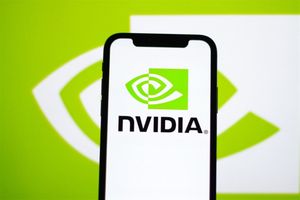- WECODUR® rotor coating technology will accelerate the development of new green solutions for the braking industry
- Investment and collaboration in the new technology facilitates innovation in high performing and lighter brake systems
- ITT’s investment is the second made by ITT Ventures, launched in 2021
April 11, 2022 -- ITT Inc. (NYSE: ITT) today announced its investment in HPL Technologies (HPL), a German-based technology start-up leading the rotor coating market with its groundbreaking WECODUR® technology. HPL developed WECODUR®, an innovative hard coating technology and related production machines that allows rotors to last longer, better resist corrosion, and reduce fine-dust emissions from brake systems. The investment was made jointly by ITT Ventures Fund and S-UBG, a German-based venture fund. ITT and S-UBG now each own 10 percent of HPL.
HPL’s WECODUR® technology, combined with ITT Motion Technologies brake pads designed specifically for hard-coated brake disks, will offer industry-leading and environmentally friendly performance and durability. The investment will help HPL Technologies accelerate further the high-scale industrialization of laser cladding and grinding machines for brake rotors. The technology will play a key role in helping to achieve future emissions requirements for high-performance brakes. For Motion Technologies, a leading supplier of brake pads, the investment enables it to continue to address its customers’ future market needs by providing the most efficient and sustainable technology.
“At Motion Technologies, developing highest-performance and environmentally friendly solutions for our customers is one of our core competencies. The combination of WECODUR® technology on brake rotors and our brake pads will offer the best performance and durability while reducing fine-dust emissions from brake systems. It also paves the way for further innovations such as lighter weight braking systems, a critical functionality for electric vehicles. This new technology has the potential to be a game-changer,” said Carlo Ghirardo, President of Motion Technologies.
The WECODUR® coating system and its related production process provide several competitive advantages:
- Longer resistance and service life: The unique technology makes brake rotors resistant to corrosion, reduces wear and tear, and increases their service life. At the same time, it maintains the high-performance characteristics of the rotor-pad combination.
- Environmentally friendly: Lab tests on WECODUR® coated rotors in combination with ITT specifically developed pads show a significant reduction in fine-dust emissions in vehicle brake systems.
- Cost-effectiveness: WECODUR® technology and machining capabilities combine hard coating and grinding operations on the brake rotors, which drives a cost advantage.
ITT Ventures is ITT’s innovation investment fund, which launched in 2021. ITT Ventures partners with early-stage technology companies it believes will accelerate growth opportunities across ITT’s key end markets. The fund primarily looks for strong management teams, innovative products and technologies, and scalable businesses for investments.
About ITT
ITT is a diversified leading manufacturer of highly engineered critical components and customized technology solutions for the transportation, industrial, and energy markets. Building on its heritage of innovation, ITT partners with its customers to deliver enduring solutions to the key industries that underpin our modern way of life. ITT is headquartered in White Plains, N.Y., with employees in more than 35 countries and sales in approximately 125 countries. For more information, visit www.itt.com.
About ITT's Motion Technologies
ITT’s Motion Technologies business designs and manufactures next-generation friction material, suspensions, shock absorbers, springs, and critical safety solutions for automotive, railway, defense, and industrial markets.
Safe Harbor Statement
This release contains “forward-looking statements” intended to qualify for the safe harbor from liability established by the Private Securities Litigation Reform Act of 1995. In addition, officers and representatives of ITT may from time to time make and discuss, projections, goals, assumptions, and statements that may constitute “forward-looking statements”. These forward-looking statements are not historical facts, but rather represent only a belief regarding future events based on current expectations, estimates, assumptions and projections about our business, future financial results, and the industry in which we operate, and other legal, regulatory, and economic developments. These forward-looking statements include, but are not limited to, future strategic plans and other statements that describe the company’s business strategy, outlook, objectives, plans, intentions or goals, and any discussion of future events and future operating or financial performance.
We use words such as “anticipate,” “estimate,” “expect,” “project,” “intend,” “plan,” “believe,” “target,” “future,” “may,” “will,” “could,” “should,” “potential,” “continue,” “guidance” and other similar expressions to identify such forward-looking statements. Forward-looking statements are uncertain, and, by their nature, many are inherently unpredictable and outside of ITT’s control, and involve known and unknown risks, uncertainties and other important factors that could cause actual results to differ materially from those expressed or implied in, or reasonably inferred from, such forward-looking statements.
Where in any forward-looking statement we express an expectation or belief as to future results or events, such expectation or belief is based on current plans and expectations of our management, expressed in good faith, and believed to have a reasonable basis. However, there can be no assurance that the expectation or belief will occur or that anticipated results will be achieved or accomplished.
Among the factors that could cause our results to differ materially from those indicated by forward-looking statements are risks and uncertainties inherent in our business including, without limitation:
-
impacts on our business due to the COVID-19 pandemic, including:
- variant strains of the virus, as well as the timing, effectiveness and availability of, and people’s receptivity to, vaccines or other medical remedies;
- disruptions to our operations and demand for our products, increased costs, disruption of supply chain and other constraints in the availability of materials and other necessary services;
- government-mandated site closures, employee illness, skilled labor shortages, the impact of potential travel restrictions, stay-in-place restrictions, and vaccination requirements on our business and workforce; and
- customer and supplier bankruptcies, impacts to the global economy and financial markets, and liquidity challenges in accessing capital markets;
- uncertain global economic and capital markets conditions, including those due to COVID-19, trade disputes between the U.S. and its trading partners, actions taken by the current U.S. administration, political and social unrest, and the availability and fluctuations in prices of steel, oil, copper, and other commodities;
- volatility in raw material prices and our suppliers’ ability to meet quality and delivery requirements;
- failure to manage the distribution of products and services effectively;
- failure to compete successfully and innovate in our markets;
- failure to protect our intellectual property rights or violations of the intellectual property rights of others;
- the extent to which there are quality problems with respect to manufacturing processes or finished goods;
- the risk of cybersecurity breaches;
- loss of or decrease in sales from our most significant customers;
- risks due to our operations and sales outside the U.S. and in emerging markets;
- fluctuations in foreign currency exchange rates and the impact of such fluctuations on our hedging arrangements;
- fluctuations in demand or customers’ levels of capital investment and maintenance expenditures, especially in the oil and gas, chemical, and mining markets, or changes in our customers’ anticipated production schedules, especially in the commercial aerospace market;
- the risk of material business interruptions, particularly at our manufacturing facilities;
- risk of liabilities from past divestitures and spin-offs;
- failure of portfolio management strategies, including cost-saving initiatives, to meet expectations;
- risks related to government contracting, including changes in levels of government spending and regulatory and contractual requirements applicable to sales to the U.S. government, including the impact of COVID vaccine mandates on our ability to continue to participate in federal contracting;
- fluctuations in our effective tax rate, including as a result of possible tax reform legislation in the U.S.;
- changes in environmental laws or regulations, discovery of previously unknown or more extensive contamination, or the failure of a potentially responsible party to perform;
- failure to comply with the U.S. Foreign Corrupt Practices Act (or other applicable anti-corruption legislation), export controls and trade sanctions, including tariffs;
- risk of product liability claims and litigation; and
- changes in laws relating to the use and transfer of personal and other information.
The forward-looking statements included in this release speak only as of the date hereof. We undertake no obligation (and expressly disclaim any obligation) to update any forward-looking statements, whether written or oral or as a result of new information, future events or otherwise.
View source version on businesswire.com: https://www.businesswire.com/news/home/20220411005849/en/
Contacts
Investor Contact
Mark Macaluso
+1 914-641-2064
mark.macaluso@itt.com
Media Contact
Luciana Filizzola
+39 327 6113095
luciana.filizzola@itt.com





